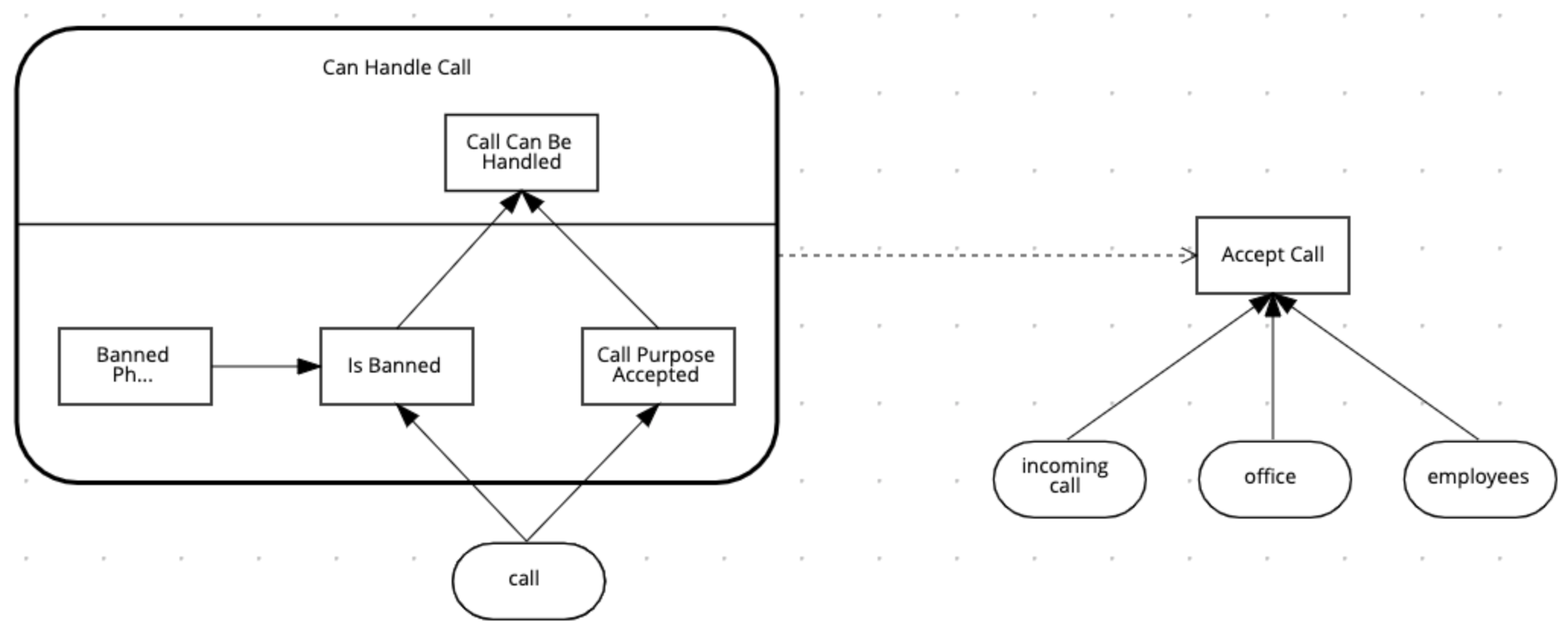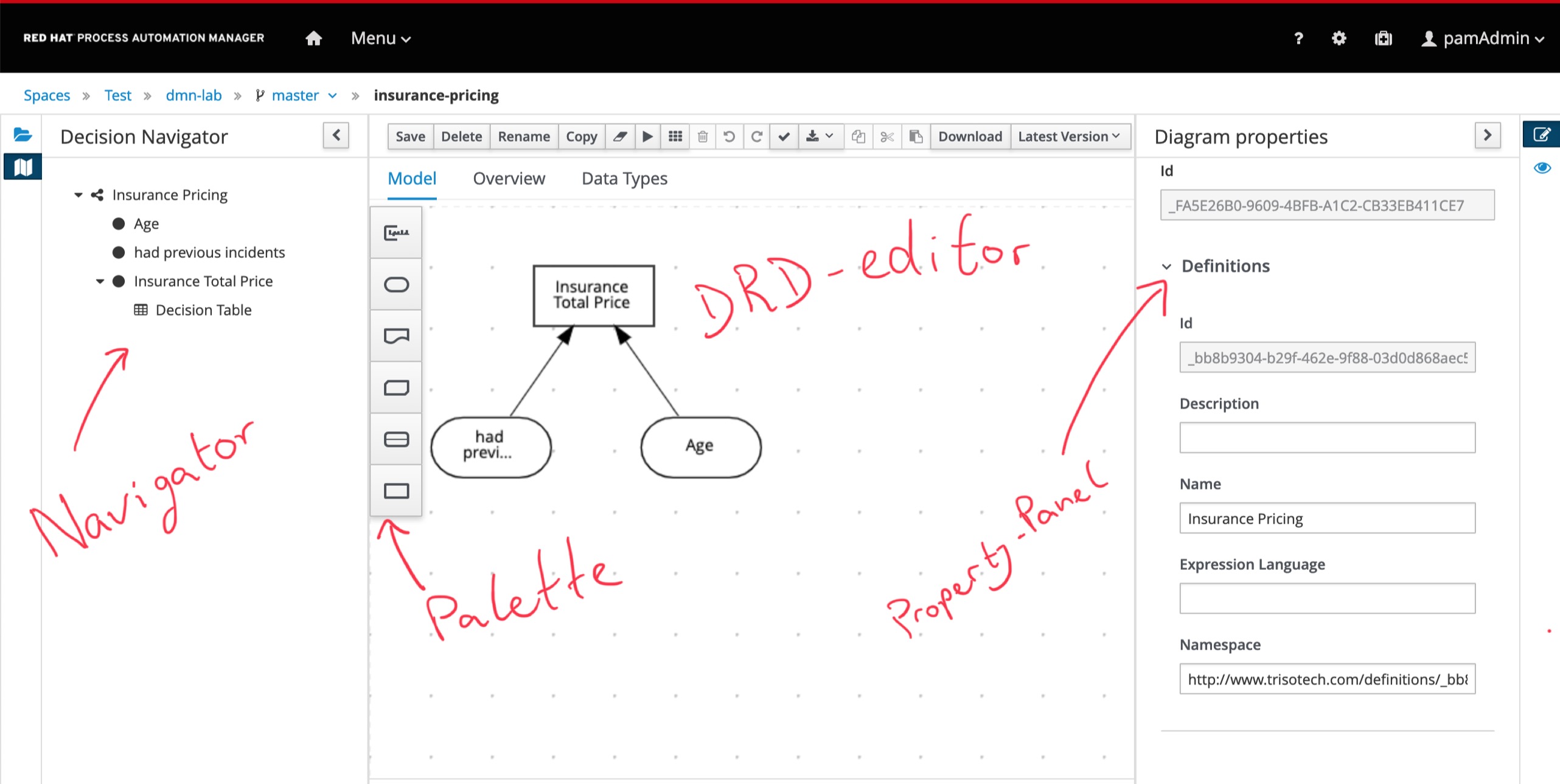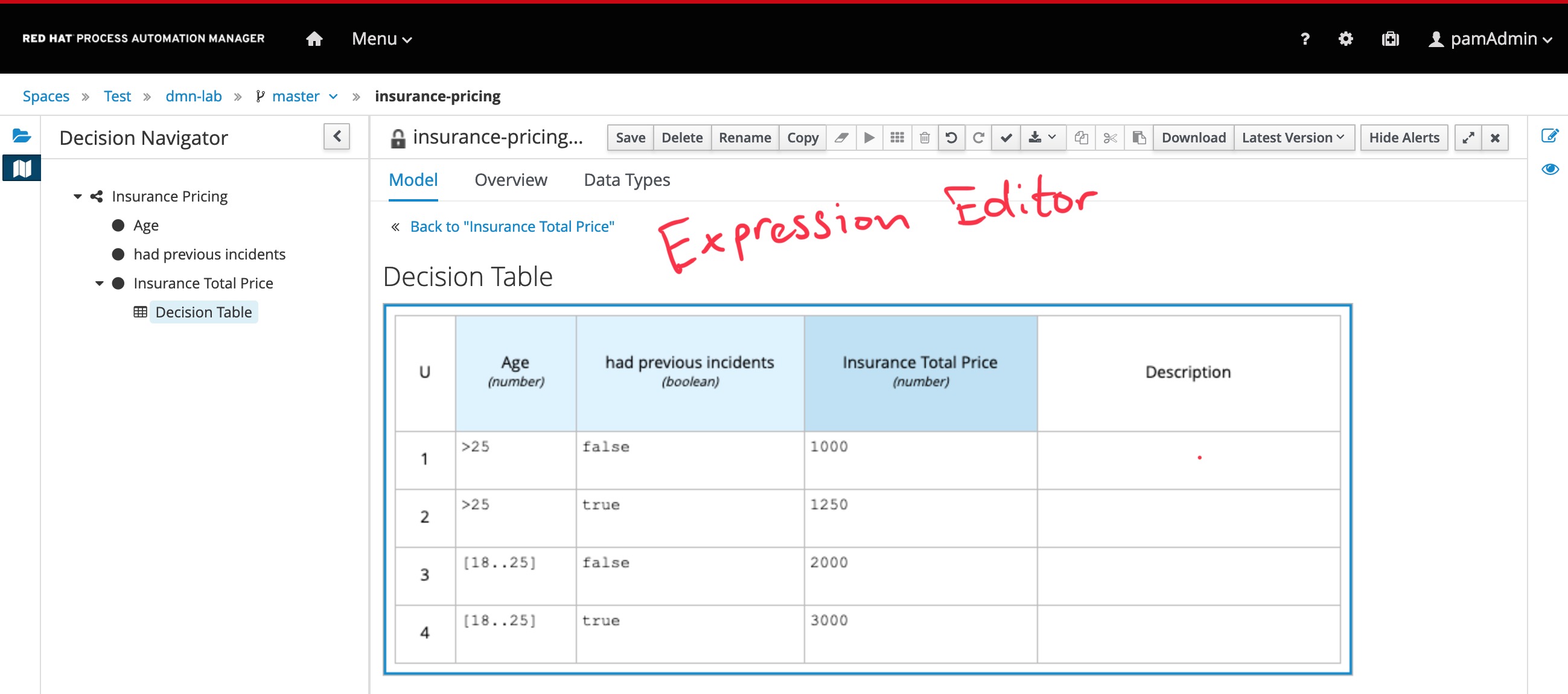DMN: Guided exercises
Practice and experiment the authoring of decisions using Decision Model and Notation - DMN with guided hands-on exercises:
-
Vacation Days: an intermediate level exercise. You will author a model from scratch, use decision tables, work with different hit policies, different FEEL constructs and expressions. Finally, you will deploy it and test it.

-
Call Center: an advanced level exercise. You will author a model from scratch, create data types, consume DMN decision services from within decision nodes, and more FEEL constructs and expressions. Finally, you will deploy it and test it.

These are independent guided exercises and you don’t need to implement the previous use case to implement the next one.
Introduction to DMN
What is DMN
Take a look at the explanation of the [DMN](http://omg.org/dmn) standard in the OMG website:
"DMN is a modeling language and notation for the precise specification of business decisions and business rules. DMN is easily readable by the different types of people involved in decision management. These include: business people who specify the rules and monitor their application; business analysts.
DMN is designed to work alongside BPMN and/or CMMN, providing a mechanism to model the decision-making associated with processes and cases. While BPMN, CMMN and DMN can be used independently, they were carefully designed to be complementary. Indeed, many organizations require a combination of process models for their prescriptive workflows, case models for their reactive activities, and decision models for their more complex, multi-criteria business rules. Those organizations will benefit from using the three standards in combination, selecting which one is most appropriate to each type of activity modeling. This is why BPMN, CMMN and DMN really constitute the “triple crown” of process improvement standards."
Red Hat Process Automation Manager and Red Hat Decision Manager bring a set of graphical tooling that allow you to author decisions using DMN and a lightweight engine that can execute these decisions. The engine and the authoring tooling set are decoupled and you can scale it independently.
Tooling Set
Under the KIE umbrella, you can find available multiple tools for authoring decisions:
-
Business Central (in RHPAM) or Decision Central (in RHDM)
-
A more business friendly UI;
-
[Business Automation VSCode Extension](https://marketplace.visualstudio.com/items?itemName=redhat.vscode-extension-red-hat-business-automation-bundle)
-
A developer IDE ([Visual Studio Code](https://code.visualstudio.com/)) extension that allows the visualization and editing of BPMN, DMN and Test Scenarios inside VSCode.
-
[GitHub Chrome Extension](https://chrome.google.com/webstore/detail/bpmn-dmn-test-scenario-ed/mgkfehibfkdpjkfjbikpchpcfimepckf)
-
A browser extension that allows you to visualize and edit BPMN, DMN and Test Scenario files directly in GitHub.
-
[KIE Sandbox](https://kiegroup.github.io/kogito-online/#/)
-
[BPMN.new](http://bpmn.new) - A free online editor for business processes;
-
[DMN.new](http://dmn.new) - A free online editor for decision models;
-
[PMML.new](http://pmml.new) - A free online editor for scorecards;
-
[Learn DMN in 15 minutes](https://learn-dmn-in-15-minutes.com/)
-
A guided tour in a website through the elements of DMN
The DMN Editor
The DMN Editor consists of a number of components:
-
Decision Navigator: shows the nodes used in the Decision Requirements Diagram (DRD, the diagram), and the decisions behind the nodes. Allows for quick navigation through the model.
-
Decision Requirements Diagram Editor: the canvas in which the model can be created.
-
Palette: Contains all the DMN constructs that can be used in a DRD, e.g. Input Node, Decision Node, etc.
-
Expression Editor: Editor in which DMN boxed expressions, like decision tables and literal expressions, can be created.
-
Property Panel: provides access to the properties of the model (name, namespace, etc), nodes, etc.
-
Data Types: allows the user to define (complex) datatypes.


